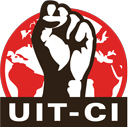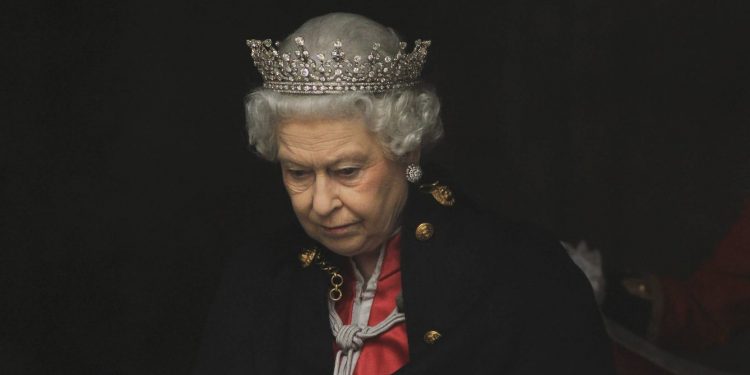By Miguel Angel Hernandez, a leader of the PSL* of Venezuela and the IWU-FI
11 September 2022. Queen Elizabeth II of England died at 96; 70 years after ascending the throne of the United Kingdom. She was the longest reigning monarch of that imperialist country.
Elizabeth II’s long reign is portrayed as synonymous with economic and political stabilisation by British imperialism. However, her death comes at a time of serious crisis within the UK after the scandalous resignation of Boris Johnson and the existence of a wave of strikes shaking the country.
After her death, the world’s major media have been making apologies for her as “an epoch-making queen”, and as someone who preserved the British crown against all odds, a reminiscence of the Middle Ages, which dates back to the 10th century AD.
Strictly speaking, the British nobility is a fundamental part of the capitalist-imperialist capitalism that made the UK the dominant country and the head of colonialism for centuries.
Since 1953, when Elizabeth Alexandra Mary Windsor, the Queen’s given name, was crowned, she has had to deal with the decline of British imperialism in the world and the rise of the United States as the leading capitalist/imperialist power.
The empire falls apart
Despite being one of the victorious Allied powers, after the Second World War much of the country’s infrastructure was destroyed, and the country was in debt and in severe economic crisis, deepening the decline that had already become clear after the First World War.
But despite this, Britain continued to act as an imperialist power. In 1956, it invaded Egypt in alliance with France to control the Suez Canal, but this military incursion was a disaster which illustrated the extent of its decline as an imperialist country. The consequence was the nationalisation of the Suez Canal, so far in British hands, by the Egyptian president Gamal Abdel Nasser, who headed Arab bourgeois nationalism.
It was against this background that the empire crumbled because of the struggle of nationalist liberation movements in the colonies. The people subjugated for decades rose. First came India in 1948, when Queen Elizabeth II was still only a princess. Burma, Ceylon, and Malaya followed. Also in 1948, the British mandate in Palestine ended, then Malta. And in the 1960s the African colonies. Ghana in 1957, Nigeria in 1960, Sierra Leone and Tanganyika in 1961, now part of the Democratic Republic of Congo, Uganda in 1962, Kenya and Zanzibar in 1963, Gambia in 1965, Botswana and Lesotho in 1966, Mauritius and Swaziland in 1968, and Seychelles in 1976. And in the Caribbean, Jamaica and Trinidad and Tobago became independent in 1962 and Barbados in 1966.
The Malvinas (Falklands) War
On 2 April 1982, the Argentinian military Junta led by Leopoldo Galtieri launched an operation to recover the Malvinas Islands, which had been seized by British imperialism in 1833. Britain immediately sent a vast fleet to recover the islands, which Argentina claimed as part of its territory. After 10 weeks of bloody fighting, Britain, with the support of the United States, defeated Argentina. Queen Elizabeth II endorsed the military operation deployed by Margaret Thatcher, and on one occasion stated: “The Falklands War was fought by British forces for democracy and freedom”. In reality, it was just another event of imperialist rapine, adding to the long list of violence and oppression that has characterised the history of British imperialism.
Britain: NATO member and staunch US ally
After losing its status as the world’s leading imperialist power, Britain was a staunch ally of the United States and accompanied it in all the military interventions carried out by what is the leading power of world imperialism.
As part of NATO, soldiers of the British army took part in the war in Lebanon between 1982 and 1984, as well as in the Persian Gulf war and the invasion of Iraq between 1990 and 1991. They also took part in the 1995 incursion into Bosnia and Herzegovina, Operation Desert Fox in Iraq in 1998, and in Kosovo between 1998 and 1999. After the attacks on the Twin Towers in New York, it was part of the invasion of Afghanistan. In 2003, it invaded Iraq with the US.
Repression in Northern Ireland, Thatcher and Lady Di’s austerity measures
On the domestic front, the Queen endorsed the British army’s brutal intervention on behalf of paramilitary organisations that favoured British rule in Northern Ireland. This conflict spanned three decades between 1968 and 1998.
Bobby Sands, a nationalist member of the Irish Republican Army (IRA), who led a long hunger strike in 1981 along with other IRA activists, died of starvation in the face of Thatcher and Queen Elizabeth II’s total indifference.
The queen accompanied Thatcher’s policies of labour deregulation, privatisation of state enterprises and reduction of social spending, promoted by the Prime Minister during the 1980s. During her reign, she was part of the progressive dismantling of the trade unions, especially since the 1984-85 mining strike, violently repressed by the British government. Hundreds of mines closed down, and those that remained were subsequently privatised, which led to the dismissal of over 10,000 miners.
Already proverbially famous are her disagreements with Princess Diana of Wales, her son Charles’ wife, who has just inherited her crown. Lady Di gave several interviews to various media in which she condemned the crown, its wealth, and classist protocols. The queen remained on holiday outside London, and it was only several days after her tragic death, and in the face of popular unrest and pressure, that she made a public address mourning her death.
The Queen’s riches
Most men and women on this planet live off the wages they earn from their daily work. Queen Elizabeth II and her family do not. However, her personal wealth is estimated at £470 million.
Much of this wealth comes from an English government subsidy (sovereign subsidy) amounting to 15 per cent of the profits earned by the Crown Estate, a conglomerate of land, real estate, businesses and other assets, which, during the financial year 2020-2021, provided the Royal Household with £99 million.
Another source of income is the so-called “private purse”, comprising 315 residences, as well as commercial premises in London and thousands of acres of land, mainly in the Duchy of Lancaster, which the royal family has owned since 1265, and which generated in the financial year 2020-2021 over £23 million.
In addition, Elizabeth II owned two private residences: Balmoral Castle in northeast Scotland, worth £115 million, and the Sandringham estate, valued at some £58 million.
Added to all these assets is a stamp collection valued at £115 million. The famous Crown Jewels, valued at £3.4 billion, as well as many works of art.
Elizabeth II’s name appeared in the Paradise Papers, leaked in 2017. According to secret documents made public, the Queen allegedly deposited, through the Duchy of Lancaster, £11 million in tax havens in the Cayman Islands and Bermuda to evade taxes.
Many workers and important sectors of the English people have sympathy for the Queen and the monarchy. This is not the case for the Irish and Scottish people, especially the former, who have frequently been at war against British imperialism. The ostentatious palace life of exaggerated luxury and privilege contrasts with the daily life of millions of English workers and labourers who suffer from capitalist exploitation. They subsidise the parasitic monarchy with their taxes.
*Socialism and Freedom Party (PSL), Venezuelan section of the International Workers’ Unity-Fourth International (IWU-FI).













